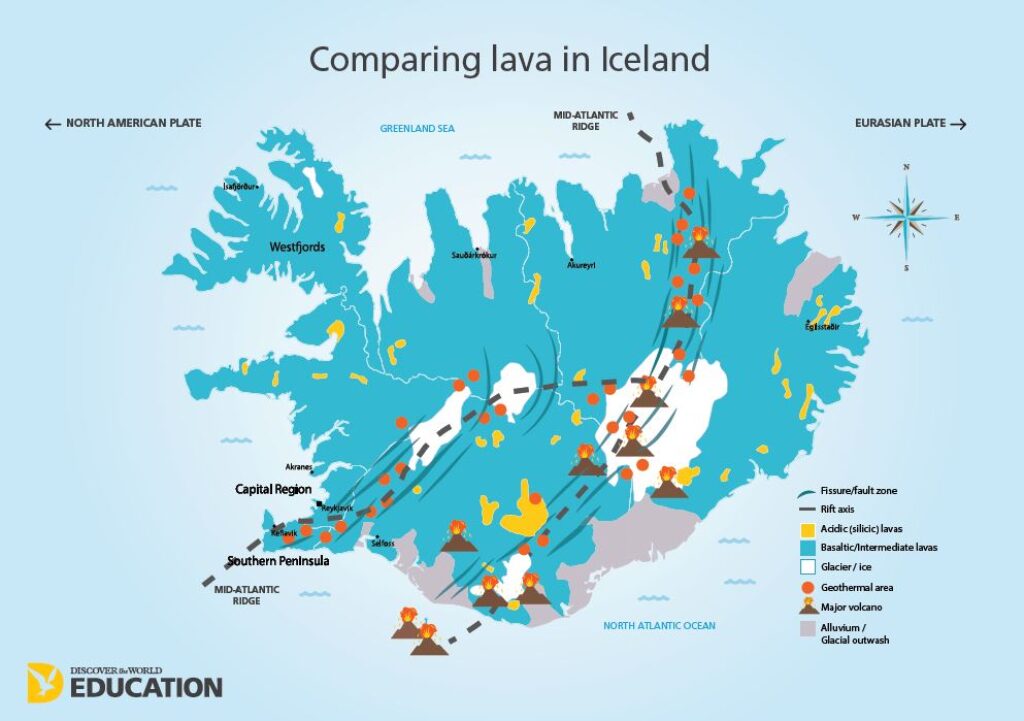Comparing Lava Types
The concept of volcanic chemistry and how this influences eruption behaviour can be a little daunting, both for us as teachers and for students. There are so many variables! Whilst students may not need to have an in-depth comprehension of magma geochemistry at GCSE level, you may find that introducing them to this concept even at a surface level actually helps with understanding why some volcanoes exhibit very different behaviour which in turn has an influence on their associated hazards, and how agencies can manage potential threats.
The following resources can be used for GCSE or as an introduction for A Level. There is a ‘Comparing Lava in Iceland’ file that can be downloaded as PDF, which you may wish to print out for a display to refer to (or print and laminate to use with students in class) or you can download and display in class. There are some suggested video links that can help to visualise the different composition of lava flows in different locations, and there are ten suggested activities that refer to the resource based on comprehension and extrapolation that will link to potential hazards and volcanic behaviour.
Download Comparing Lava Types Activities PowerPoint presentation >

| Activity | Duration |
|---|---|
| Draw up a table to compare the two main lava types, pahoehoe and a'a. How do they compare? What is similar, what is different? | 15 mins |
| Which lava type do you think creates the most explosive eruptions? Why? | 10 mins |
| Which lava type would be hardest to manage an eruption for? Which would be the most dangerous? | 10 mins |
| Create a case study for two volcanic eruptions that have different lava types, for example you could compare Eyjafjallajokull and Kilauea. Include their location, the type of magma, types of lava flows, volcanic hazards during the eruption, impacts on people and the environment. | 60 mins |
| Study the geology map. What is the pattern for where most volcanoes are found? Why might they be found here? | 10 mins |
| What is the link between geothermal areas and volcano location? Why are geothermal areas found where they are? | 10 mins |
| How does lava and magma type change the shape and size of a volcano? | 10 mins |
| List some of the minerals found in volcanic magma. How does mineral type change depending on the different volcanoes? | 20 mins |
| Why might people live near volcanoes, what benefits do they bring? | 15 mins |
| Imagine you worked for the Icelandic government. How would you recommend people prepare themselves for an eruption if they lived near Eyjafjallajokull? What hazards might they be at risk of? How could they prepare their homes, vehicles, animals, farms? | 30 mins |